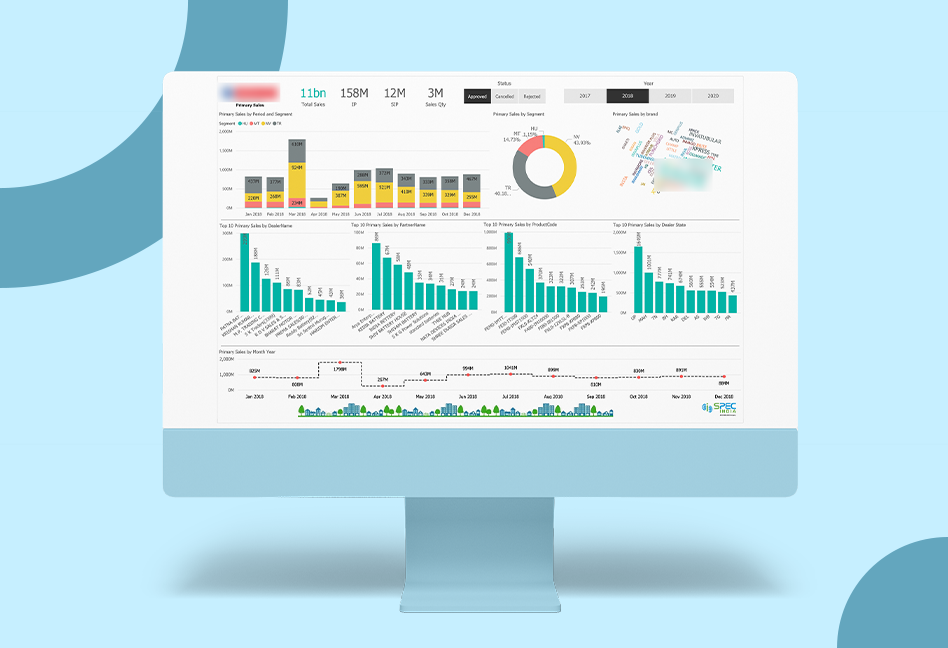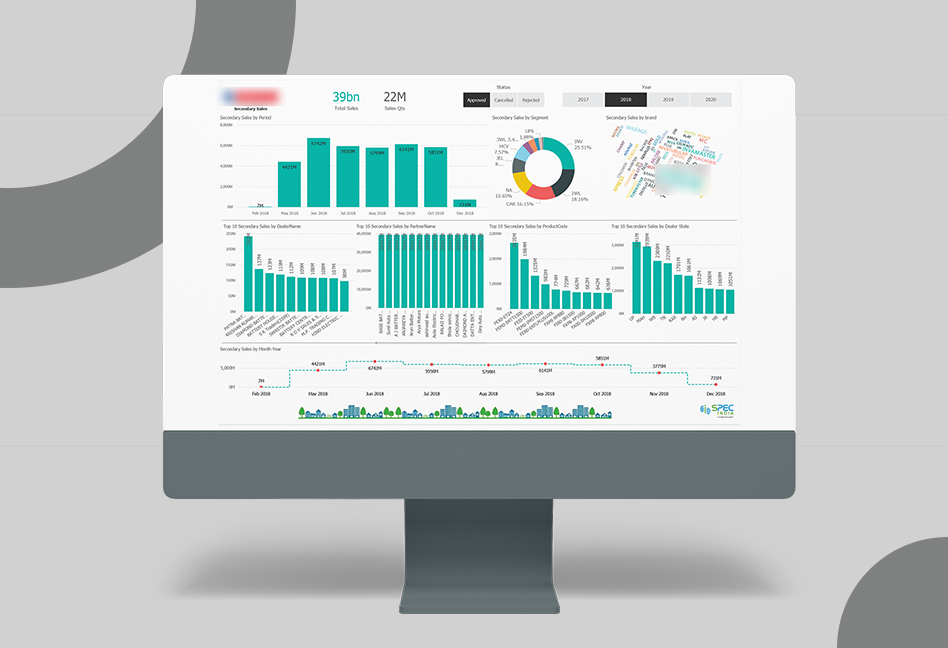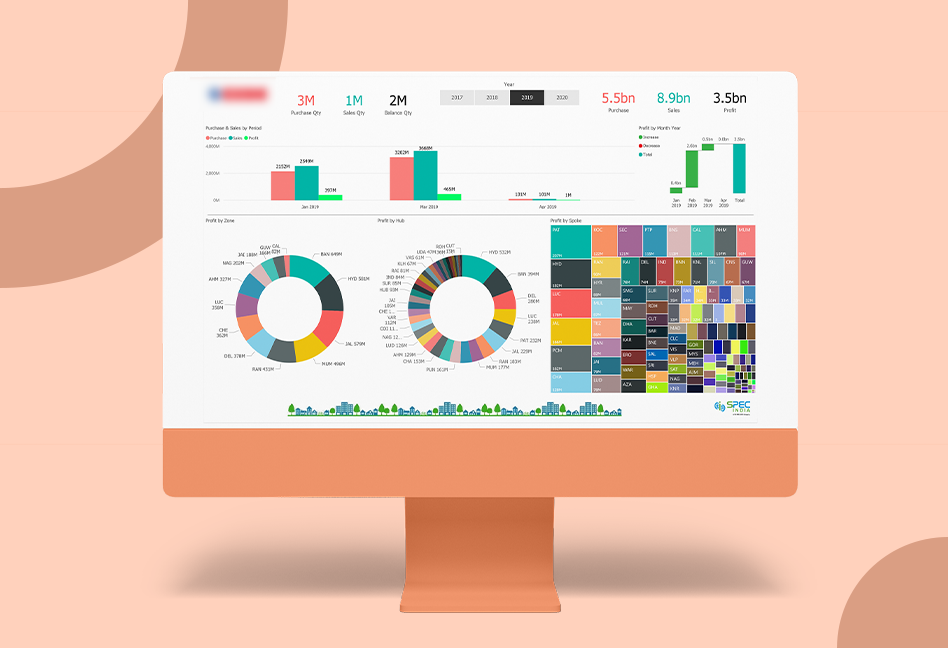 One tree
One tree One life

The client, a leading automotive and industrial lead-acid battery manufacturer, has a global presence and over six decades of reliable service faced challenges amidst fierce competition. The client aimed to streamline operations and gain insights from their data efficiently and effectively.
 Power BI
Power BI
 SQL Server
SQL Server





The client's goals were to streamline operations and gain valuable insights from their data to stay competitive in the market. They expected efficient solutions to optimize their processes and improve decision-making.

The existing system lacked streamlined access to both primary and secondary sales data, forcing users to manually compile the data in Excel sheets. This manual process led to inefficiencies and delays in data analysis and decision-making.

Users encountered difficulties when attempting to customize reports by adding or removing columns. This process was cumbersome and prone to errors, hindering their ability to tailor reports to specific needs or preferences efficiently.

The frequent alterations in data formats and scripts introduced complexities in data management, resulting in increased errors and inefficiencies. These changes disrupted the workflow and impeded smooth data processing and analysis.

Creating detailed reports with various parameters necessitated considerable time and effort from users. The complexity of generating such reports added to the workload and slowed down the overall reporting process, affecting productivity and decision-making timelines.
This involved creating a single, unified dashboard within the Power BI platform that aggregates data from multiple sources. By centralizing data visualization and analysis tools, users can access all pertinent information in one location, facilitating efficient decision-making and reducing the need to switch between different applications or systems.
We consolidated disparate reports into a cohesive framework, enabling seamless access to insights derived from different datasets. By integrating reports, users gain a comprehensive view of enterprise data, allowing for better-informed decision-making and strategic planning.
We incorporated dynamic visualization techniques such as slicing and dicing, allowing users to interactively explore data from various angles. This enables users to drill down into specific data subsets or dimensions, uncovering deeper insights and identifying trends that may not be apparent at a higher level of analysis.
We optimized the data management process by implementing tools and features that simplify tasks such as adding or removing columns in reports. This streamlines report customization, reducing the time and effort required to tailor reports to specific requirements or preferences.
We leveraged data filtering capabilities to enable users to focus on relevant information by applying filters based on specific criteria such as time period, geographical location, or product category. This enhances data visibility and clarity, allowing users to extract actionable insights more effectively.
We enabled seamless integration between Power BI and Excel, allowing users to import data from Excel spreadsheets directly into visualizations within the Power BI environment. This simplifies data import processes and enhances data analysis capabilities, enabling users to leverage the power of both Excel and Power BI for enhanced insights and decision-making.









Primary and secondary sales data are gathered from multiple sources such as transaction records, CRM systems, and spreadsheets. This involves compiling data from various departments and sources within the organization.

The collected data is then integrated into the Power BI platform, ensuring that it is cleansed, standardized, and formatted appropriately for analysis. This step involves combining data from disparate sources into a unified dataset within Power BI.

A centralized Power BI dashboard is developed to visualize the integrated data. This involves designing an intuitive and user-friendly interface that presents key metrics, KPIs, and insights in a visually appealing manner.

Various reports generated from the integrated data sources are incorporated into the Power BI dashboard. This includes reports on sales performance, market trends, customer behavior, and other relevant metrics.

Training sessions are conducted to educate business users on how to effectively utilize the Power BI dashboard for data analysis and decision-making. This includes instruction on navigating the dashboard, interpreting visualizations, applying filters, and generating custom reports.

Reports and dashboards can now be easily modified as per user requirements.
Direct access to reports saved significant time for business users. Accessing reports has become much easier as compared to previous methods.
The graphics interface enabled quick and efficient data analysis with minimal effort. Data analysis became a cup of tea for the client.
Integrated reports facilitated rapid downloading of massive data in Excel format. The time taken to download the data has significantly improved after the development of the Power BI Dashboard.

“SPEC House”, Parth Complex, Near Swastik Cross Roads, Navarangpura, Ahmedabad 380009, INDIA.
“SPEC Partner”, 350 Grove Street, Bridgewater, NJ 08807, United States.
This website uses cookies to ensure you get the best experience on our website. Learn more